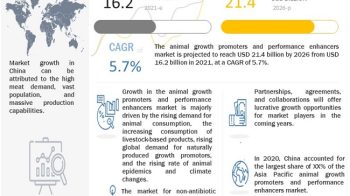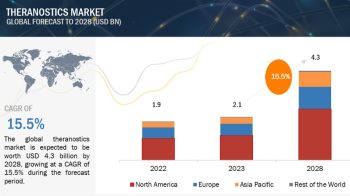The global animal parasiticides market is poised to reach USD 9.75 billion by 2020 from an estimated USD 7.41 billion in 2015, at a CAGR of 5.7% during the forecast period (2015–2020). The rising demand for animal-derived food products, increasing investments from government organizations and private players, growing concerns over the spread of zoonotic diseases, and growth in companion animal population are the major factors driving the growth of the animal parasiticides market.
In the last two decades, milk and meat production has increased across the globe. Moreover, the consumption of meat and milk has increased significantly in developing countries, such as China, India, and Russia. The demand for animal-derived food products is expected to increase from 200 kcal per person per day in 2000 to 400 kcal per person per day by 2050 in sub-Saharan Africa and South Asia. Since diseases caused by parasites in livestock may degrade the quality of animal-derived food products, there is a growing need for preventive measures against parasitic diseases. As a result, the growing demand for animal-derived food products is expected to drive the growth of the animal parasiticides market.
Investments from government organizations and market players in R&D activities for animal healthcare have increased in the last few years, majorly due to the growing awareness about animal healthcare and rising concerns over preventing the outbreak of zoonotic diseases. The demand for effective drugs against emerging and existing parasites is in turn increasing the number of R&D activities on animal parasiticides. Globally, the average spending on R&D in animal healthcare is about 7-8% of the total revenue of individual players operating in the animal healthcare industry; approximately 69% of this investment is made in the European region.
The companion animal population in European and North American countries has grown significantly over the years. According to the European Pet Food Industry Federation, the total number of pets in the European region increased to 2.8 billion in 2014 from 2.7 billion in 2012. The growing pet adoption in these regions is expected to offer significant growth opportunities to players operating in the companion animal healthcare market.
Europe dominates the global animal parasiticides market. Increasing number of companion animals, rising companion animal healthcare expenditure, increasing awareness about animal diseases, growing number of veterinary practitioners (coupled with a growth in their income levels), and growing adoption of pet insurance are the major factors driving this market. However, the market in the Asia-Pacific (APAC) region is expected to witness the highest growth in the next five years. The high growth in the APAC market can mainly be attributed to the growing livestock population, increasing pet adoption, rising awareness about animal health, progressive urbanization, and growing animal-derived food product consumption in this region.

